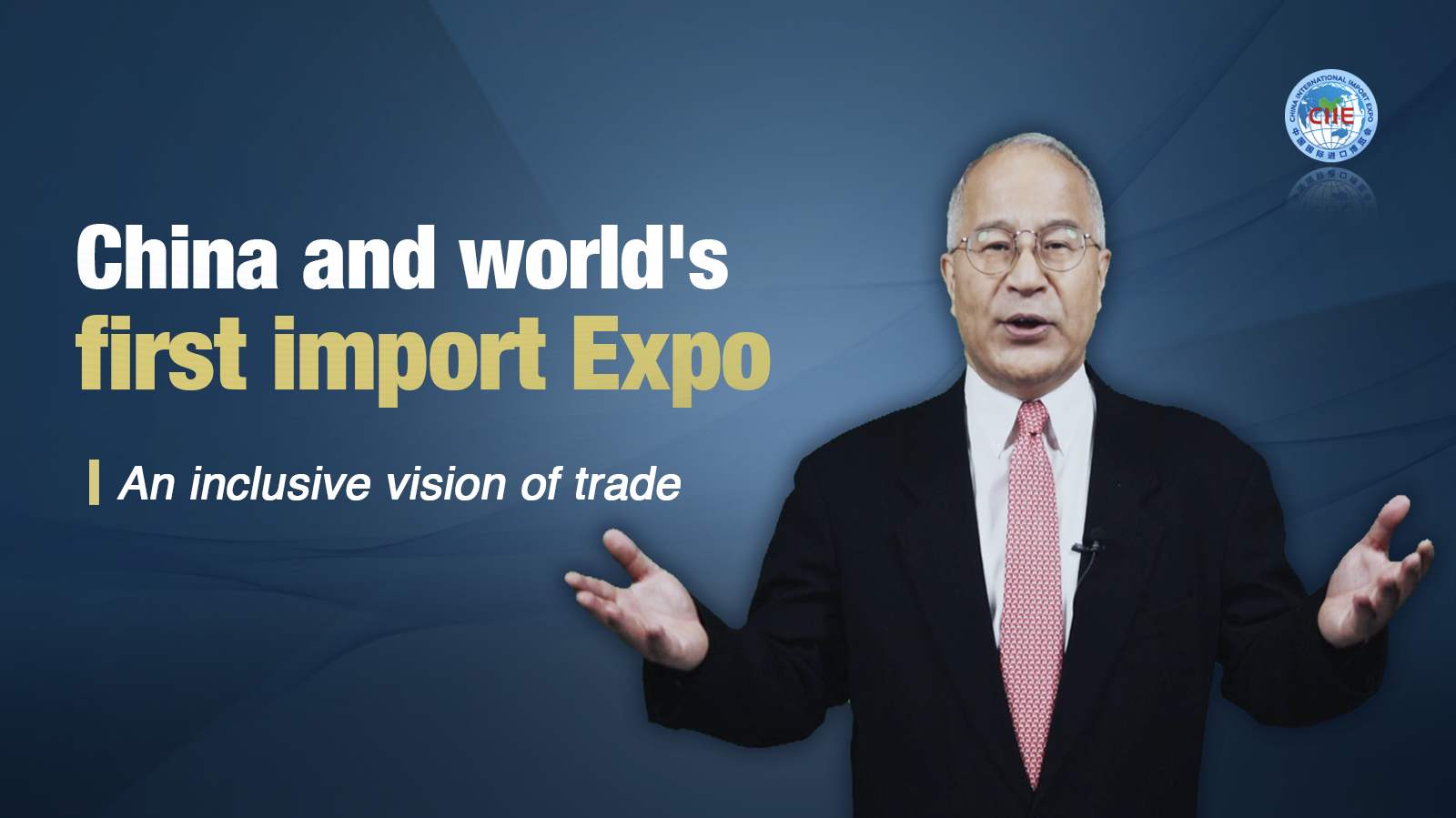
Opinions
12:56, 03-Nov-2018
China's import expo shows an inclusive vision of trade
Updated
12:49, 06-Nov-2018
Einar Tangen
04:22

Editor's note: Einar Tangen is a current affairs commentator. The article reflects the author's opinion, and not necessarily the views of CGTN.
On November 5, Shanghai will host the world's first international expo devoted to imports. There will be over 130 countries and regions, and 2,800 businesses looking to engage more than 150,000 Chinese and foreign buyers.
The event is about opportunity and an inclusive vision of trade, new technology, services, products, the city of Shanghai and the thousands of volunteers who have chosen to be part of this historic event. But, the larger questions are: Why is China holding this unique event? What is involved? And, what does it mean for China and the rest of the world?
The event's focus on imports is a radical departure from conventional trade event norms, but a strong signal of China's vision for a shared global prosperity.
The determination behind the expo and reasoning Chinese President Xi Jinping referred to at the 2017 World Economic Forum:
“China has not only benefited from economic globalization but also contributed to it. Rapid growth in China has been a sustained, powerful engine for global economic stability and expansion.”
In the coming five years, China will import over 10 trillion US dollars' worth of products and services. With its rising middle-class population, China will be the second biggest import market in the world, after the US.
Since the launch of its economic reforms, China has attracted more than two trillion US dollars' worth of foreign direct investments, sent out 1.1 trillion US dollars in direct outbound investments and, since its founding, provided over 58 billion US dollars in foreign assistance.
To give substance to its words, China has expanded its market policies in proactive ways, fostering a more consumption-driven economy. China has broadened market access, enhanced its alignment with international economic and trade rules and strengthened the protection of intellectual property rights. Import tariffs have been significantly reduced, offering - as displayed by the expo itself - an open arms invitation to foreign imports.
For example, in November 2017, China cut import tariffs on 187 products ranging from pharmaceuticals to food, health supplements, and clothing. On July 1, 2018, further tariff reductions were made on 1,449 items.
The expo itself aims to dazzle the world with its increasingly sophisticated domestic markets, innovative distribution channels, and fintech. It comes at a time when businesses around the world are anxious about where their future growth will come from.
Unfortunately, the main cause of this global uncertainty, the US, does not plan to send senior government officials to attend the expo, a situation that America's main economic rival, the European Union (EU), will benefit from.
Considering that according to the OECD 2016 data, the worldwide US dollar value of exported goods and services totaled almost 8.3 trillion, compared to the total of just more than 2.2 trillion for the US, it is clear that the EU has a dominant global position and apparently no serious US competitor is in the race for China's markets.
Lastly, in late December, China will celebrate the 40th anniversary of its opening-up and economic reform policies. It's probable that what has been learned at the expo will figure prominently in the upcoming reforms and policies which represent China's commitment to a "community of shared future," an idea premised on mutual cooperation, fairness, and equality.
So, all the best to those who come to the expo to learn and prosper from the opportunities they find.
Scriptwriter: Einar Tangen
Videophotographer: Zhou Jinxi, Qi Jianqiang
Animation: Xu Qianyun
Editing: Zhou Jinxi

SITEMAP
Copyright © 2018 CGTN. Beijing ICP prepared NO.16065310-3
Copyright © 2018 CGTN. Beijing ICP prepared NO.16065310-3